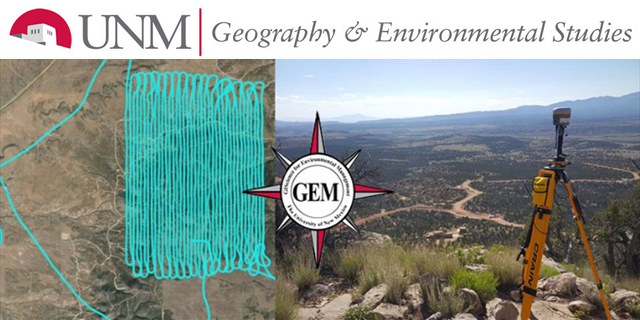
Geography ETDs
Publication Date
Summer 7-16-2018
Abstract
Forested ecosystems in the American Southwest are experiencing change at an unprecedented rate, largely due to mortality events triggered by increased temperatures, drought, and insect infestations. Large-scale changes in the distributions of these ecosystems can potentially alter regional-scale carbon, water and energy dynamics. One biome in particular that has experienced increased mortality and altered forest composition over the past 30 years are Piñon-Juniper woodlands (Pinus edulis, Juniperus spp.) in the American Southwest. New fields of study, in particular, Remote Sensing, are applying and adapting traditional methods for ecological monitoring of these woodlands. Remote sensing offers the potential to synoptically classify and quantify specific tree species within mixed communities such as Piñon-Juniper (PJ) woodlands. This thesis tests the utility and reliability of an Object-Based Image Analysis (OBIA) classification applied to Very-High Resolution (VHR) imagery fused with historical National Agricultural Imagery Program (NAIP) imagery for detecting and quantifying piñon-pine mortality trends on a plateau of PJ woodland in Central New Mexico. Specifically, the research seeks to determine: (1) the accuracy of OBIA applied to VHR imagery for quantifying live PJ and dead piñon; and (2) the potential of NAIP data for creating an ecological timeline of forest mortality from 2005-2014. The OBIA process generated an overall classification accuracy of over 70%, whereas the time-series analysis using NAIP resulted in an overestimation of piñon mortality when compared to two sample-plots at the region.
Degree Name
Geography
Department Name
Geography
Level of Degree
Masters
First Committee Member (Chair)
Caitlin L. Lippitt
Second Committee Member
Christopher D. Lippitt
Third Committee Member
Marcy E. Litvak
Document Type
Thesis
Language
English
Keywords
Remote Sensing, OBIA, Pinon-Juniper Woodlands, GIS Modeling, NDVI, NAIP
Recommended Citation
Taraschi, Zachary C.. "Evaluating the Utility of Object-Based Image Analysis for Ecological Monitoring of Pinon-Juniper Mortality." (2018). https://digitalrepository.unm.edu/geog_etds/40
